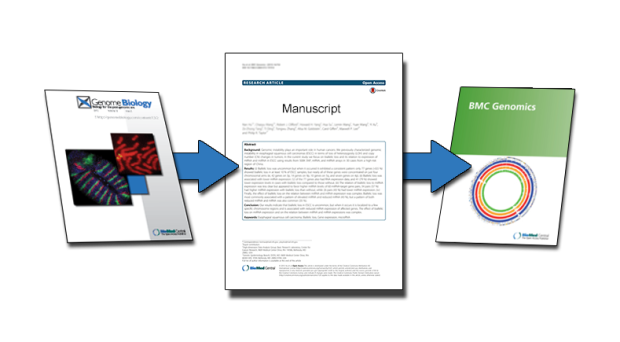
‘Waste’ in peer review
Peer review can be a frustrating process. One of the biggest inefficiencies of the current standard peer-review process is the redundancy of sequential reviewing of manuscripts by different – or indeed – the same reviewers for other journals when a manuscript was not suitable for publication in the authors’ first choice journal. This places an unnecessary burden on the scientific community.
In a previous panel discussion on peer review, Joshua Sanes, co-chair of the Neuroscience Peer Review Consortium and one of the Founding Editors-in-Chief of the BioMed Central journal Neural Development, described it as a “tremendously wasteful process, as papers start at what is perceived as the top, and then slide their way downhill until they find their proper niche”.
Transferable (or portable) peer review – a possible solution?
If a manuscript is not suitable for the threshold of a given journal, but is otherwise sound and in scope for another, the authors have the option to transfer the manuscript.
BioMed Central has a policy of portable peer review across all journals. If a manuscript is not suitable for the threshold of a given journal, but is otherwise sound and in scope for another, the authors have the option to transfer the manuscript together with the reviewer reports, provided that the reviewers have consented for their reports to be passed on to another journal. In some cases this can remove the need for further ‘re-review’ with a new set of reviewers.
As part of Peer Review Week, we contacted authors who’ve made use of our portable peer-review policy to find out about their experience with transferring to another journal.
“It is no shame to be rejected from a journal, because the fit or relevance is not as expected for that journal,” said Uli Technau, Professor of Developmental Biology at the University of Vienna and Editor-in-Chief of Frontiers in Zoology. “If one is rejected for instance from BMC Biology, then [the manuscript may] still be very well-suited for another BioMed Central journal.”
Stefano Lonardi, Professor of Computer Science and Engineering at University of California commented on one of the major issues with resubmitting to another journal. “The process of reformatting […] takes time and efforts. Transferring the manuscript to another journal in the same portfolio makes this process easier. We just had to respond to reviewers’ comment for the journal that declined our manuscript, and we were done.”
When asked if he thought that transfers between different publishers should be encouraged, Prof Lonardi noted that “it would be very nice if publishers would agree to a common format for submission and use a minimal set of information on the manuscript to proceed with the first evaluation from the editor.”
What we’re doing at BioMed Central
BioMed Central has an established manuscript transfer service, where manuscripts and the reviewers’ reports (if appropriate), can be transferred to an alternative journal of the authors’ choice.
BioMed Central has an established manuscript transfer service, where manuscripts and the reviewers’ reports (if appropriate), can be transferred to an alternative journal of the authors’ choice. We’re working on a number of improvements to our transfer process – including the development of a manuscript referral service and communication on behalf of the authors with the editors of potential destination journals.
Along with other publishers, BioMed Central also has a number of journals participating in the Neuroscience Peer Review Consortium, an alliance of neuroscience journals that have agreed to accept manuscript reviews from other members of the Consortium.
This forward-thinking initiative – although largely welcomed by the community – has faced some challenges along the way, and is working on increasing the visibility of the consortium. We also consider manuscripts which have been reviewed by third parties, such as Peerage of Science and Axios Review.
Since 2013, we are additionally part of a cross-publisher peer review consortium between eLife, the Public Library of Science (PLoS) and the European Molecular Biology Organization (EMBO) to encourage the appropriate transfer of manuscripts if the author agrees between publishers rather than just in individual in-house publishing cascades.
Tell us what you think
The ultimate goal of ‘transferable peer review’ is to help reduce the burden on the scientific community – helping authors to quickly find the right home for their research and increasing the efficiency of the review process by removing redundant re-evaluation of already reviewed manuscripts.
What other steps should we be taking as a publisher to help? What can we do to improve our transfer service? How do you envisage the peer-review process changing in the future? Leave your comments below or get in touch with us at transfersdesk@biomedcentral.com to let us know your thoughts!
Comments